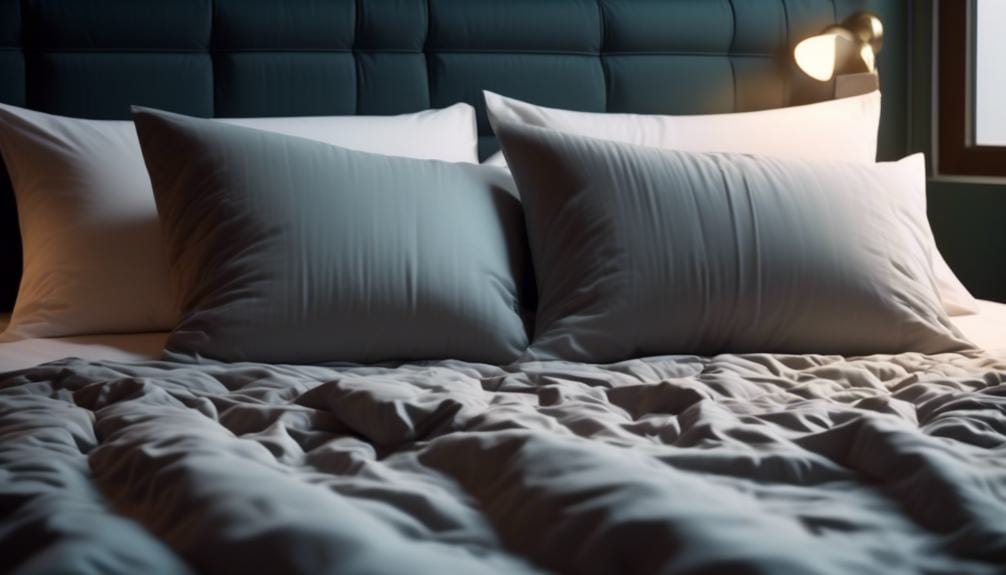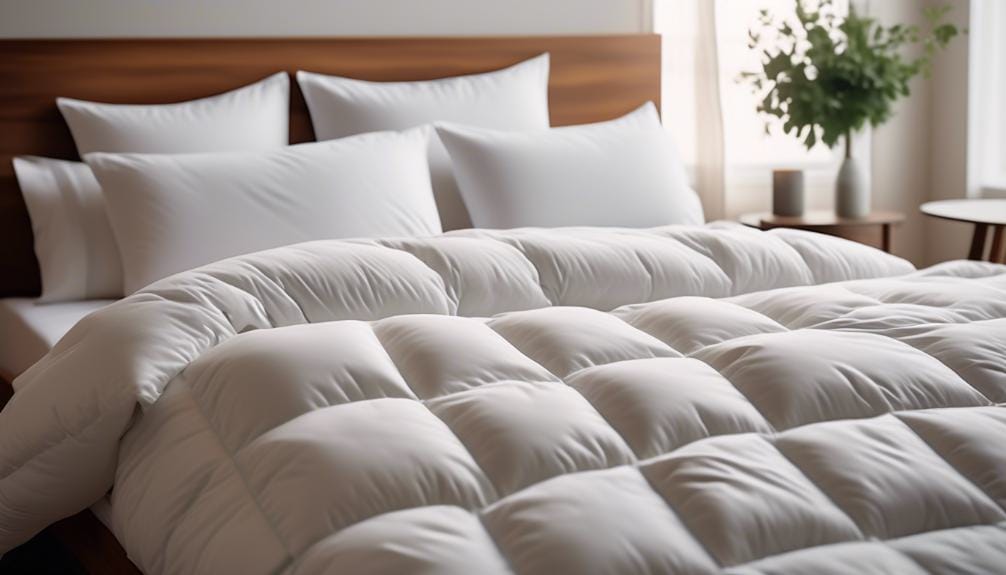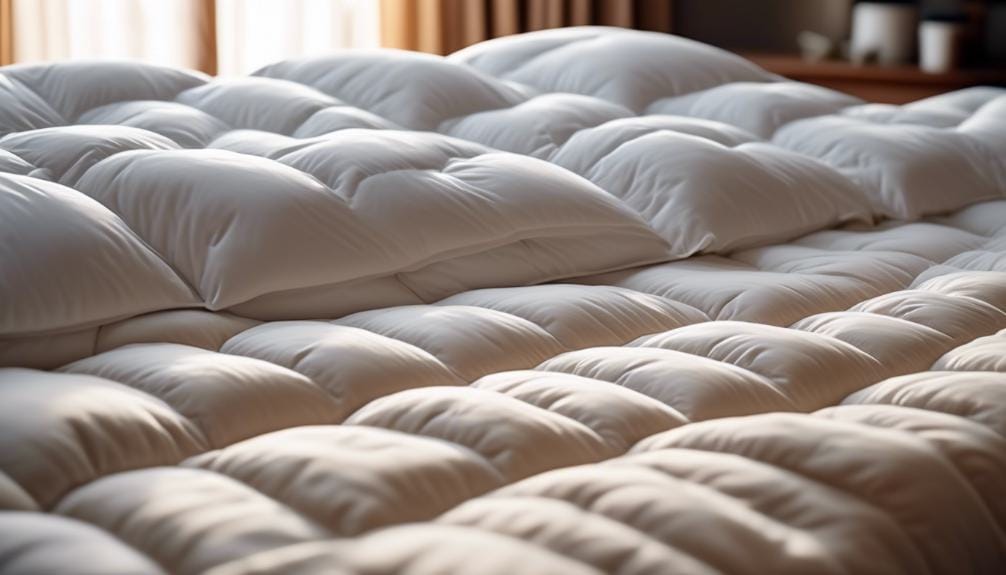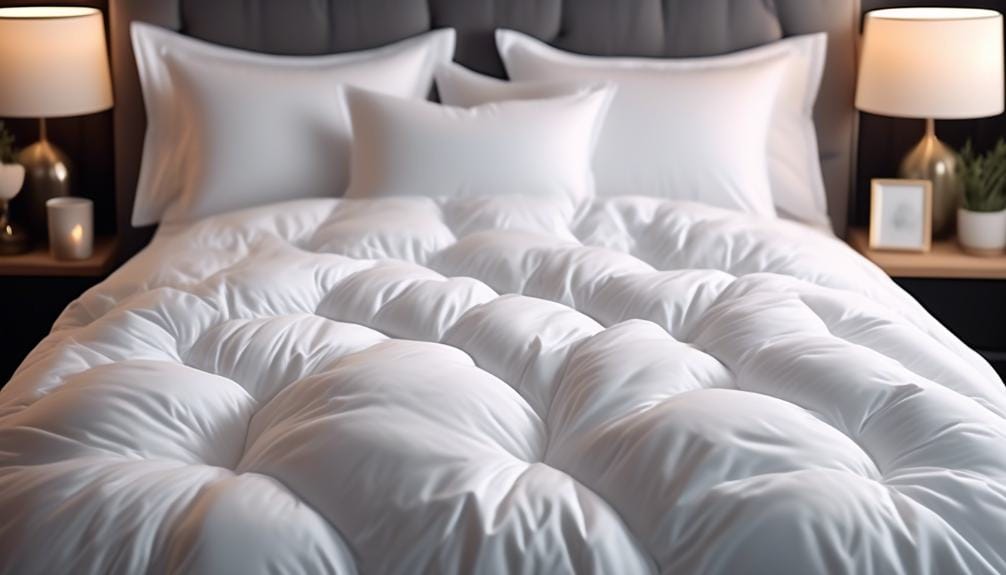What Do Duvet Covers Go Over? Unveiling Bedding Basics
So, you’ve probably never given much thought to what exactly a duvet cover is meant to cover. You might be surprised to learn that it’s not just for looks, but it serves a practical function as well.
Have you ever wondered what’s inside a duvet cover, or how to choose the right one for your needs? Understanding the basics of bedding can make a significant difference in your bedroom’s overall look and feel.
Let’s uncover the mystery of duvet covers and explore the essential aspects of bedding that go beyond just aesthetics.
Key Takeaways
- Duvet covers are protective shells for duvets that keep them clean and extend their lifespan.
- Duvet covers add a decorative touch to the bed, enhancing the overall look of the bedding.
- There are different types of duvet inserts available, such as down, feather, synthetic, and wool, each offering unique qualities.
- When choosing the right filling for a duvet, consider factors like insulation, weight, hypoallergenic properties, and temperature regulation.
Understanding Duvet Covers

Do you know what makes duvet covers an essential part of bedding basics?
Duvet covers are like protective shells for duvets, offering both practical and aesthetic benefits. They help in keeping the duvet clean and preserving its lifespan while also adding a decorative touch to your bed.
Inside a duvet cover, you can fill it with various types of duvet inserts, such as down, feather, synthetic, wool, and silk, based on your preferences and needs. For instance, a King duvet insert might be the perfect choice for a larger bed. The filling of duvet covers is crucial as it impacts the insulation, comfort, and breathability of your bedding ensemble. Consider factors like sleeping preferences and climate when choosing the filling.
Whether for decoration, comfort, or creating layered looks, duvet covers provide versatility in styling and practicality. Understanding the importance of duvet covers and the options available can greatly enhance your overall bedding experience.
Types of Duvet Inserts

Duvet inserts come in various types, each offering unique features and benefits for your bedding needs. When choosing a duvet insert for your duvet cover, consider the following options:
- Down Duvet Inserts: These provide extra warmth and are lightweight, making them perfect for cold nights inside your duvet cover.
- Feather Duvet Inserts: Offering a cozy and warm feel, these inserts are a popular choice for those seeking comfort and insulation.
- Synthetic Duvet Inserts: Budget-friendly and hypoallergenic, these inserts are ideal for individuals looking for an affordable and allergy-free option for their duvet cover.
- Wool Duvet Inserts: Known for their temperature regulation properties, wool duvet inserts are suitable for use throughout the year, making them a versatile option for your duvet cover.
Each of these duvet inserts has its own set of advantages, so it’s important to consider your specific needs, such as warmth, allergies, or budget, when choosing a duvet filler for your duvet cover.
Choosing the Right Fillings

When selecting the fillings for your duvet insert, consider the insulation, warmth, and other properties offered by down, feather, synthetic, wool, and silk options to find the best fit for your specific bedding preferences.
Down fillings provide excellent insulation and warmth, coming in various fill power options to suit different needs.
Feather fillings offer a balance between warmth and weight, providing a cozy and warm feel.
If you’re looking for a budget-friendly and hypoallergenic alternative, synthetic fillings mimic natural down and are easily cleaned.
Wool fillings are breathable, moisture-wicking, and resistant to dust mites and mold, offering temperature regulation for different seasons.
On the other hand, silk fillings are luxurious, lightweight, and hypoallergenic, providing a comfortable and opulent choice for bedding.
When choosing the right filling for your duvet cover, consider your preferences for warmth, weight, and maintenance.
Feather-filled duvets are a popular choice for their combination of warmth and coziness.
Whether you prefer the luxurious feel of silk or the natural benefits of wool, there are various filling options to suit your needs.
What to Use Inside

Selecting the appropriate filling for your duvet cover involves considering factors such as allergies, warmth, and sustainability. When putting something inside a duvet cover, you have a wide range of options to choose from, including:
- Down: Offers exceptional warmth and lightness, but may not be suitable for those with allergies.
- Feather: Provides a similar feel to down but at a more affordable price point.
- Synthetic: A hypoallergenic option that’s easy to care for and suitable for those with allergies.
- Wool or Silk: These natural materials offer excellent temperature regulation and moisture-wicking properties, making them ideal for various climates.
When considering what goes inside a duvet, it’s essential to coordinate the size and weight of the duvet insert with the duvet cover for the best fit and comfort. Corner loops in the duvet cover can help hold the insert in place, ensuring that the cover lays flat and stays evenly distributed. Additionally, if you prefer a lighter alternative, quilts or blankets can be used inside a duvet cover, but they may require additional securing methods without corner loops.
Whatever you choose, make sure the duvet cover is filled and laid flat at the foot of the bed for a polished and inviting look.
How to Put On

Considering the factors involved in selecting the appropriate filling for your duvet cover, it’s important to know how to put it on properly for a comfortable and polished look.
To start, turn the duvet cover inside out. Then, secure the corners of the cover and insert the duvet with ties or loops. Once the duvet is inside the cover, roll the cover and insert from the top to the bottom of the bed. Close the cover with a zipper, buttons, or other closure. After closing, unroll the duvet cover and insert it from the bottom to the top of the bed. This method ensures that the duvet stays evenly distributed within the cover for a neat appearance.
When placing the duvet on the bed, keep your duvet folded at the foot. This technique helps to prevent the duvet from bunching up and keeps it in place, maintaining a tidy and well-made bed.
Frequently Asked Questions
What Do Duvet Covers Go Over?
Duvet covers go over duvets, protecting them from bacteria and extending their lifespan. When selecting a cover, consider materials, size, and design to match your decor. To fill a duvet cover, turn it inside out, place the duvet, align, and shake for proper insertion.
What Do You Put Under Duvet Cover?
You put a duvet insert or comforter under a duvet cover. It provides protection, warmth, and a stylish look. Choose the right size and material for a cozy night’s sleep. Lay the insert inside the cover, align corners, and secure for a snug fit.
Do You Put a Duvet Cover Over a Down Comforter?
Yes, you put a duvet cover over a down comforter. It acts as a protective and decorative layer. The cover is easy to remove, machine washable, and allows you to change the appearance of your bedding.
Does Bedding Set Include Duvet Cover?
Yes, bedding sets may or may not include a duvet cover, so it’s important to check the product details. When purchasing a bedding set, ensure it includes all the necessary components to meet your bedding needs.
Conclusion
In conclusion, duvet covers are a practical and stylish addition to your bedding. They go over duvets or comforters, providing protection and allowing you to change up the look of your bedding and room.
With a variety of materials, colors, and patterns to choose from, you can find the perfect duvet cover to suit your style and needs.
So, whether you’re looking for added comfort or a new decorative element, duvet covers are a must-have for any bedroom.
